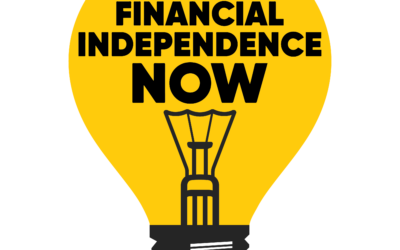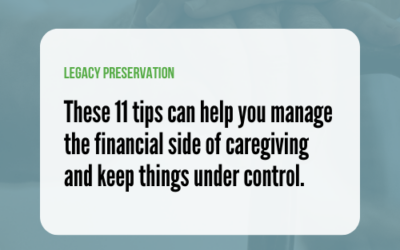Estate Planning
Intergenerational Transfers: Helping Adult Children
When a parent is considering giving or lending a child money, the key question is whether it’s empowering or enabling. You need to structure a transfer that is best for both generations.
When my older daughter Meredith bought a house in Portland, Oregon, in 2015, she needed help with the down payment. Housing prices were escalating fast and she feared that if she didn’t get in then, she would forever be forced to rent. So I transferred $27,000 to her account. She assumed it would be a loan.
But in looking at her financial situation—she works hard but as a private school teacher doesn’t get paid a lot—I didn’t want to burden her with payments to me, so I called it an advance on her inheritance.
Around the same time, my other daughter Maureen was moving to California. She had equity in her previous home so she had the down payment, but she was proposing to take on a mortgage that was a bit out of her reach. So I evened things up inheritance-wise and agreed to give her $500 a month until I had paid her a total of $27,000.
For better or for worse, this is one of the ways my family is handling intergenerational transfers. A financial professional might have told me not to do it—that I should save that money for retirement. But I feel strongly about helping my kids when they need it, not making them wait until I pass. And who knows— maybe I’ll need their help someday. Meredith is already talking about building a granny flat on her property, in preparation for the day when I can no longer navigate my two-story home. This is what families do. We help each other.
There is no question that parents have a hard time being objective about helping their kids financially. This is where a financial professional can come in, one who doesn’t just run numbers, but gets to know your family and offers advice to include both generations.
Parental help: empowering or enabling?
When a parent is considering giving or lending a child money, the key question is whether the transfer is empowering or enabling. This is where an outside eye can lend some objectivity. It’s easy for loving parents to fall into a trap where they keep giving a needy adult child money without seeing any progress on the part of the child to get on his or her feet. Pouring more money into a stagnant situation is not helpful. But parents may feel they have no choice; if they stop paying, the child could go under (get evicted, lose insurance, default on loans, etc.). In these cases you need to work out a plan. Get help, if needed, to devise a plan that you both can agree to. It might involve reducing the payments little by little or setting a deadline, say 90 days, after which no further payments will be made.
If the transfer promises to be empowering—say it’s a loan to get through school, start a business, or buy a home—be positive and encouraging, but also realistic. Run the numbers to make sure you aren’t depriving yourselves or hurting your own future. Although children receiving such aid may say they’ll be in a position to help their parents later on if necessary (once the business is successful or their degree has gotten them a high-paying job), most parents would prefer to retain their financial independence. Determine how much you can afford to give without impairing your own financial security.
Where is the money coming from?
For my daughter’s transfer, I happened to have the money in a liquid account, so there was no penalty or tax associated with the withdrawal. But if you are planning a large gift or loan and the money is currently in an IRA, retirement plan, or investment account, consider the financial repercussions of the withdrawal, such as early withdrawal penalties, income taxes on the distribution, or capital gains taxes from the sale of assets. Also consider the opportunity cost of paying taxes sooner than needed on those retirement plan distributions, or the loss of future investment earnings on the securities that were liquidated. Without proper planning, the loan or gift could cost more than you anticipate.
What will be the impact on other family members?
I could have given Meredith the $27,000 without Maureen ever knowing about it. But these things have a way of coming out, and my family tends to be very upfront with each other about our finances. Upon hearing about Meredith’s new home purchase Maureen would have certainly wondered how she managed to save such a large down payment on a teacher’s salary. That’s why I immediately jumped in and offered to give Maureen an equal amount. When financial dealings are unequal and shrouded in secrecy, resentments build.
If you propose to help one child financially, consider seriously how to create equality among the siblings, whether it’s by transferring an equal amount as I did, or revising the will to even things out in the end. The worst legacy a person can leave is squabbling children.
Gift, loan, or investment?
Generational transfers can take several forms depending on the purpose and how the money is used. I chose to make the $27,000 transfer to Meredith a gift, partly because I wanted to keep it simple. I didn’t want either of us to have to mess with debt repayments. Simplicity is also what inspired the $500 monthly payments to Maureen. I want their inheritance to be split 50/50, without the need to account for different percentages based on who got more during my lifetime.
But the $27,000 transfer could have been structured in other ways. I could have made it a loan, with an established interest rate and mutually agreed-upon repayment schedule. The repayment schedule could have been tailored to my daughter’s ability to pay, either spreading it out over many years or calling for payments to start on some date in the future. It turns out that the property appreciated so far so fast that she was able to refinance and pull quite a bit of cash out after about a year. In retrospect, it might have been better for me to have made it a loan conditioned upon getting my money back upon refinancing. But it’s all good. She put the money back into the house, further increasing its value.
Another way I could have structured it would have been to participate in future equity buildup—in other words, it could have been an investment for me. Upon the happening of some event, such as sale, refinancing, or the passage of a certain number of years, the property would be appraised and I would get my share of the appreciation on that $27,000. According to Zillow, the house is now worth $404,000. She bought it in 2015 for $282,000. That’s appreciation of 43% over four years. Not a bad investment—too bad I missed it by making the transfer a gift instead of participating in the equity. Oh well. It’s the gift that keeps on giving.
There are many, many ways intergenerational transfers can be structured, but there must be clarity from the outset. Which is it, a gift or a loan? If it’s a gift, say so. If it’s a loan, draw up specific repayment terms, perhaps using a tool like LoanBack. But to hand over a check and mumble something like, “pay me back when you can,” creates uncertainty and could lead to resentments and bad feelings down the road.
As far as the IRS is concerned, the $500 monthly payments I am making to Maureen are well under the annual gift tax exclusion, currently $15,000, so there are no tax consequences and no need to file a gift tax return. The $27,000 I transferred to Meredith in 2015 was over the annual exclusion amount, but well under the (current) $11 million lifetime gift and estate tax exemption which I don’t ever plan to exceed. (I just discovered, in writing this story, that I should have filed a gift tax return in 2015 even though I don’t expect the gift to be subject to gift tax. Oops. The penalty is 5% of the net tax due for each month the form is delinquent, not to exceed 25%. But since I don’t expect there ever to be any gift or estate tax due, even if the exemption gets lowered back to, say, $5 million, the penalty is moot.)
If I had structured the $27,000 transfer as a loan, I might have charged an interest rate that’s good for both of us—less than she would pay on a commercial loan but more than I would get in a comparable CD or debt security. Many families structure their intrafamily loans this way, and they work out well for everyone concerned. One possible downside is that the loan repayments do not go onto the child’s credit report. Another possible downside is that the child could always default on the loan, in which case the loan turns out to be an unintended gift.
When setting up an intrafamily loan, make sure the borrower pays an interest rate at least equal to the Applicable Federal Rate. This will avoid having the loan be deemed a gift and will get around the need to file a gift tax return if the amount exceeds the annual gift exclusion. If the loan later turns into a gift—because the child defaults or you forgive it—you can file the gift tax return at that time. Note that until the entire lifetime exemption is used up, there will be no gift taxes due. The filing of the gift tax return is simply a way to keep track of lifetime gifts so they can be applied against the exemption at death. No payment needs to be made at the time the gift tax return is filed.
The interest payments you receive on the loan are subject to ordinary income tax. They are not tax- deductible to the borrower unless the loan is structured as a mortgage, with a first or second home serving as collateral for the debt.
What about co-signing a loan?
If you prefer not to give or lend money to your kids, you might consider co-signing a loan. In my view, this is the worst way to do it. You are on the hook for the loan—yet have no control over the repayments. But sometimes it’s the only way a transaction can be done. Under the best-case scenario the child makes the payments on time and your involvement is never needed. This also helps the child build credit. Worst case, the child defaults and you pick up the payments. Such payments would then be considered loans or gifts to the child and be managed accordingly.
Put it in a new light
Much of the press about parents helping children is cast in a negative light, implying that the kids are bums, the parents are pushovers, and no good can come from it. But what if such intergenerational transfers were viewed in more positive terms? The kids get a boost at a time when they need it the most. The parents feel good about being able to help. Family bonds are strengthened. And when the funds are used for investment purposes (as my daughters’ homes have turned out to be), it can actually add to the family pot.
Elaine Floyd, CFP®, is Director of Retirement and Life Planning for Horsesmouth, LLC, where she focuses on helping people understand the practical and technical aspects of retirement income planning.
It’s a good life!

SERVICES WE OFFER RELATED TO THIS TOPIC
The information contained in this post is for general use and educational purposes only. However, we do offer specific services to our clients to help them implement the strategies mentioned above. For specific information and to determine if these services may be a good fit for you, please select any of the services listed below.
You May Also Like…
EP 0012. The Three Generations of Annuities
The Financial Independence Now Podcast Hosted by Randy LuebkeIn Episode 12 of the Financial Independence Now podcast,...
11 Financial Tips to Make Caregiving Easier
Tax Planning Caregivers generally tend to their elderly/ disabled family members as a labor of love, but it can also...
EP 0011. Budgeting for Dummies
The Financial Independence Now Podcast Hosted by Randy LuebkeIn this episode of Financial Independence Now, host Randy...







